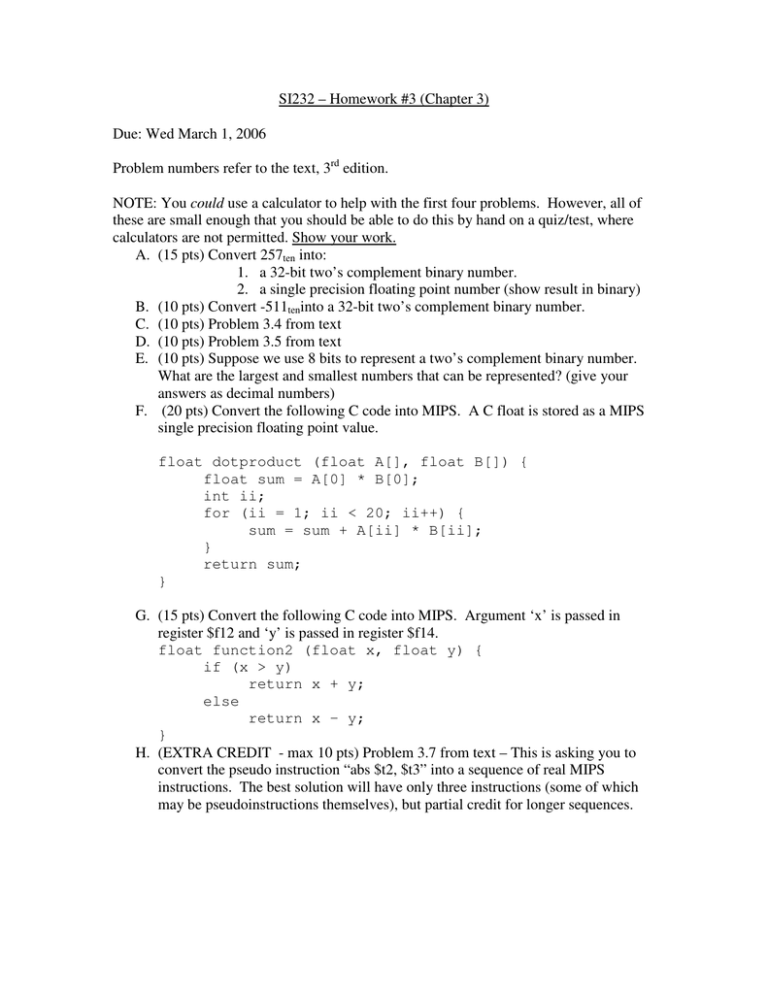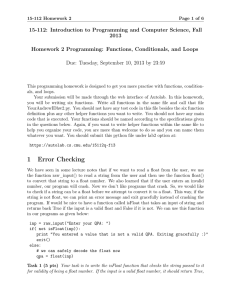SI232 – Homework #3 (Chapter 3) Due: Wed March 1, 2006
advertisement

SI232 – Homework #3 (Chapter 3)
Due: Wed March 1, 2006
Problem numbers refer to the text, 3rd edition.
NOTE: You could use a calculator to help with the first four problems. However, all of
these are small enough that you should be able to do this by hand on a quiz/test, where
calculators are not permitted. Show your work.
A. (15 pts) Convert 257ten into:
1. a 32-bit two’s complement binary number.
2. a single precision floating point number (show result in binary)
B. (10 pts) Convert -511teninto a 32-bit two’s complement binary number.
C. (10 pts) Problem 3.4 from text
D. (10 pts) Problem 3.5 from text
E. (10 pts) Suppose we use 8 bits to represent a two’s complement binary number.
What are the largest and smallest numbers that can be represented? (give your
answers as decimal numbers)
F. (20 pts) Convert the following C code into MIPS. A C float is stored as a MIPS
single precision floating point value.
float dotproduct (float A[], float B[]) {
float sum = A[0] * B[0];
int ii;
for (ii = 1; ii < 20; ii++) {
sum = sum + A[ii] * B[ii];
}
return sum;
}
G. (15 pts) Convert the following C code into MIPS. Argument ‘x’ is passed in
register $f12 and ‘y’ is passed in register $f14.
float function2 (float x, float y) {
if (x > y)
return x + y;
else
return x – y;
}
H. (EXTRA CREDIT - max 10 pts) Problem 3.7 from text – This is asking you to
convert the pseudo instruction “abs $t2, $t3” into a sequence of real MIPS
instructions. The best solution will have only three instructions (some of which
may be pseudoinstructions themselves), but partial credit for longer sequences.





